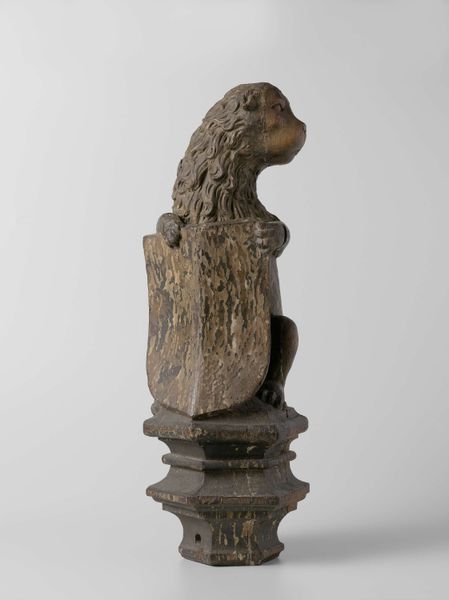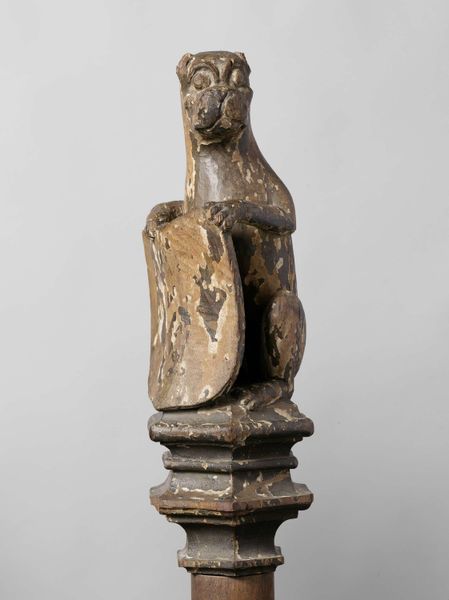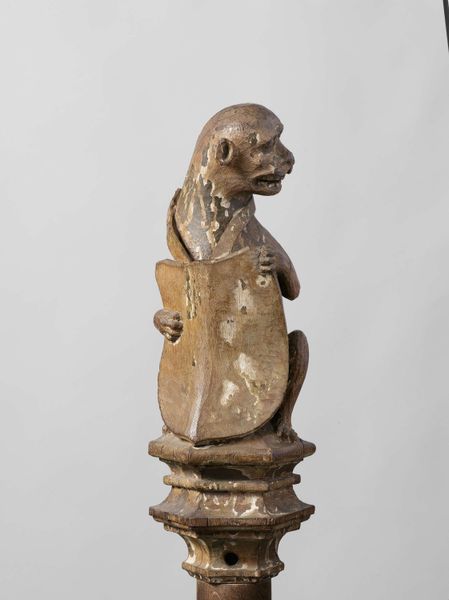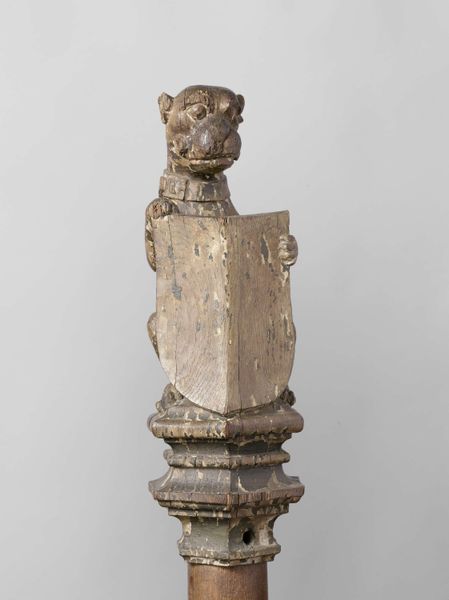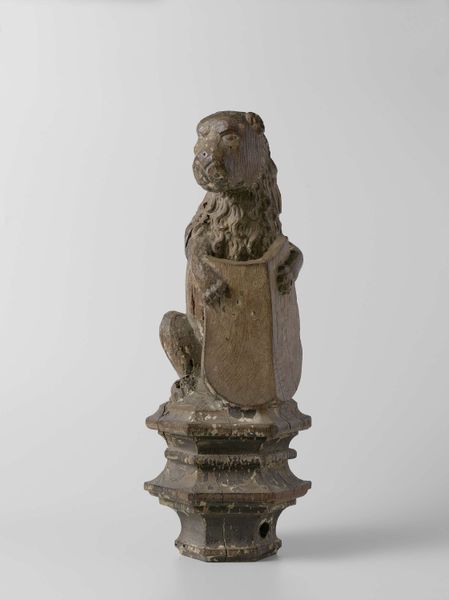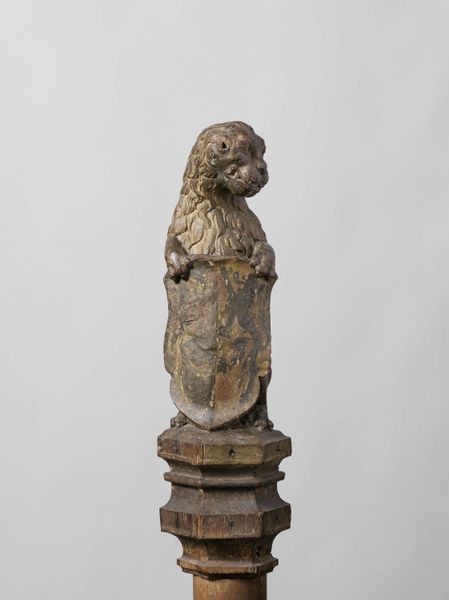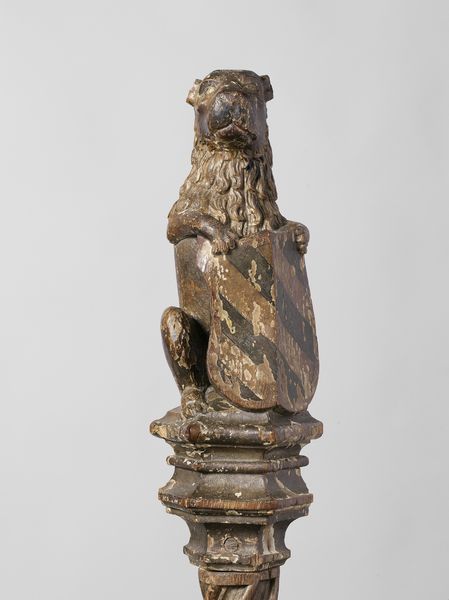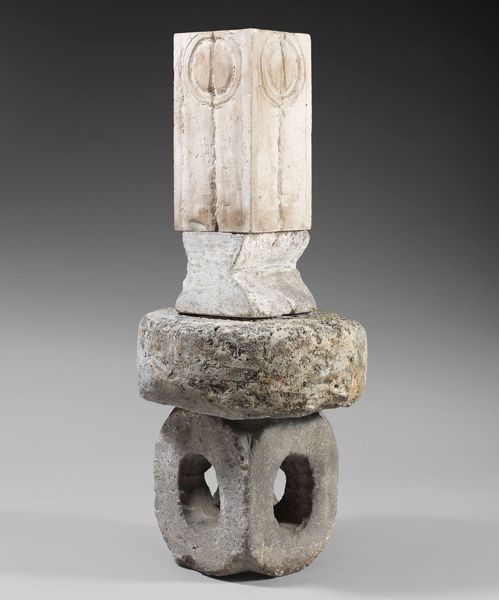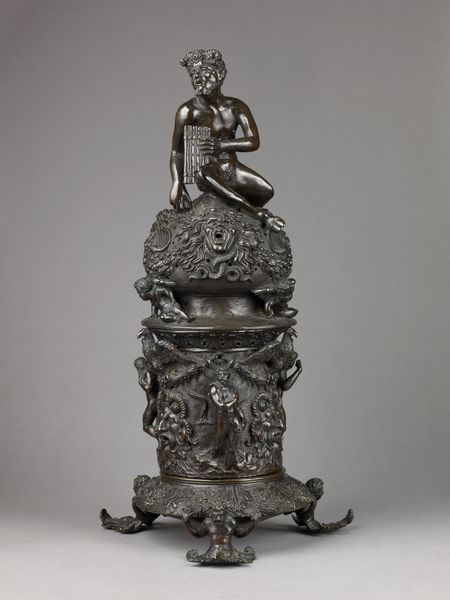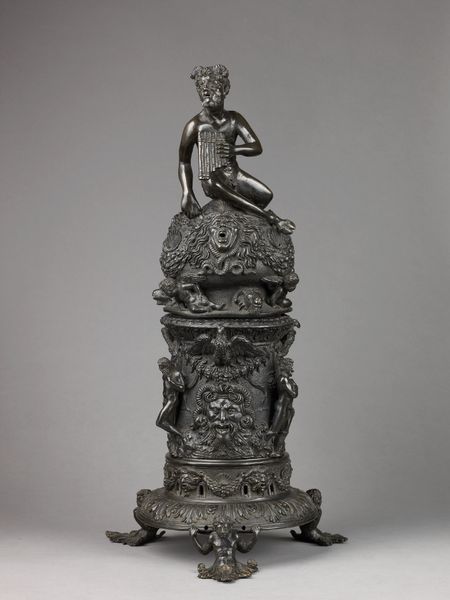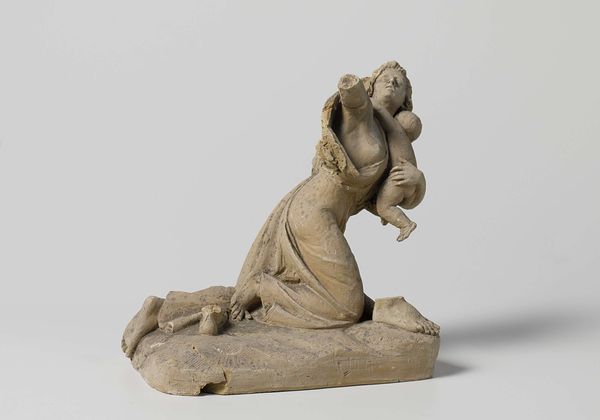
Otter Supporting an Escutcheon, from the Top of a Balustrade or the Backrest of the Stadholder’s Chair in the Rolzaal in the Hof van Holland, The Hague 1511
0:00
0:00
sculpture, wood
#
medieval
#
sculpture
#
figuration
#
sculpture
#
wood
#
realism
Dimensions: height 55.5 cm, width 19.5 cm, depth 19.5 cm
Copyright: Rijks Museum: Open Domain
Curator: This limewood sculpture is entitled "Otter Supporting an Escutcheon," and dates back to 1511. The artist is Joost Janszoon. It originally adorned the Stadholder’s chair in the Rolzaal in The Hague. Editor: It's remarkable! At first glance, I'm struck by how stately, almost heraldic, the otter appears. Yet, there's a rustic quality to the carved wood. It projects a grounded, material sensibility, right? Curator: Absolutely. The choice of limewood is key. It's a relatively soft wood, allowing for fine detail but also implying a certain fragility, even as it upholds a symbolic shield. Given its placement in a hall of governance, the otter itself as a representation becomes really fascinating, politically. Why an otter? Editor: The question is, who crafted it? Was this Joost Janszoon an established artist, or a local artisan engaged specifically for this commission? The hand of the craftsman, regardless, feels close. You see the tool marks, feel the density and potential imperfections of the wood itself. This counters any romanticized notion of 'high art.' Curator: Precisely! We have to think about workshop practice at this time. This was before the art market as we understand it, before clear delineations between "art" and "craft." What level of agency did Janszoon have in its design? And who decided on the otter motif, anyway? Was this choice significant to the Stadholder and to their politics? The very functionality as architectural element blurs the lines between pure art and designed utility. Editor: Yes, and thinking of its initial placement, on a chair in the halls of power, meant constant exposure, and inevitably some degree of wear. These were functional objects; they weren't placed reverentially behind glass, they would have become part of the social exchange. I'd wager most who saw this never thought about it as “art” in our modern conception. Curator: That forces us to reflect on our contemporary categorization practices. To view this "Otter Supporting an Escutcheon" not only as sculpture, but also as an artifact interwoven within a nexus of labor, political symbolism, and spatial utility. Editor: Thinking about materiality in concert with the sculpture’s history and use gives one a greater appreciation for art’s varied nature throughout history. Thanks for sharing your insights. Curator: A pleasure. It enriches how we contextualize such works and hopefully encourages new layers of analysis.
Comments
No comments
Be the first to comment and join the conversation on the ultimate creative platform.
